
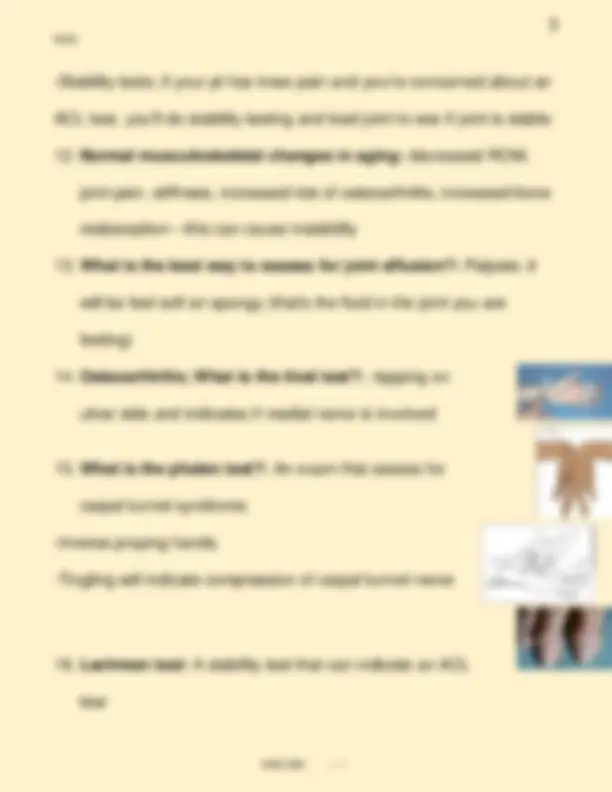
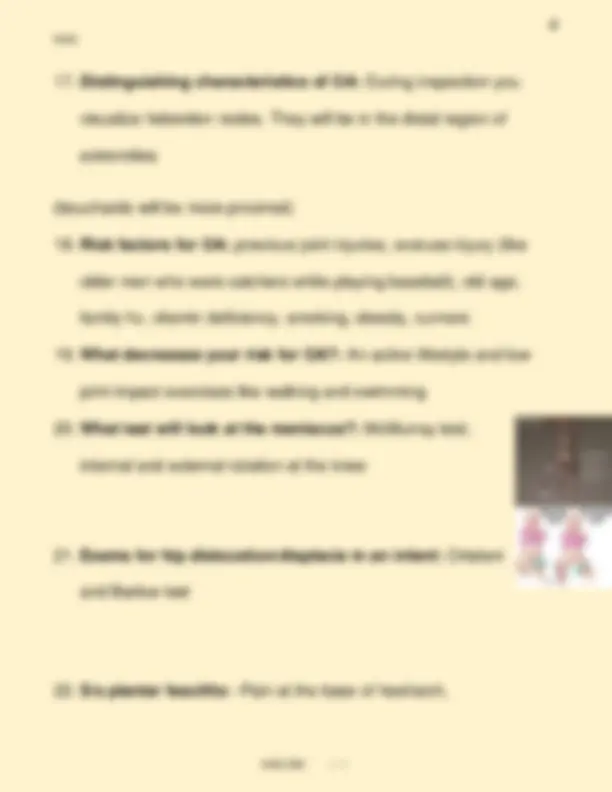
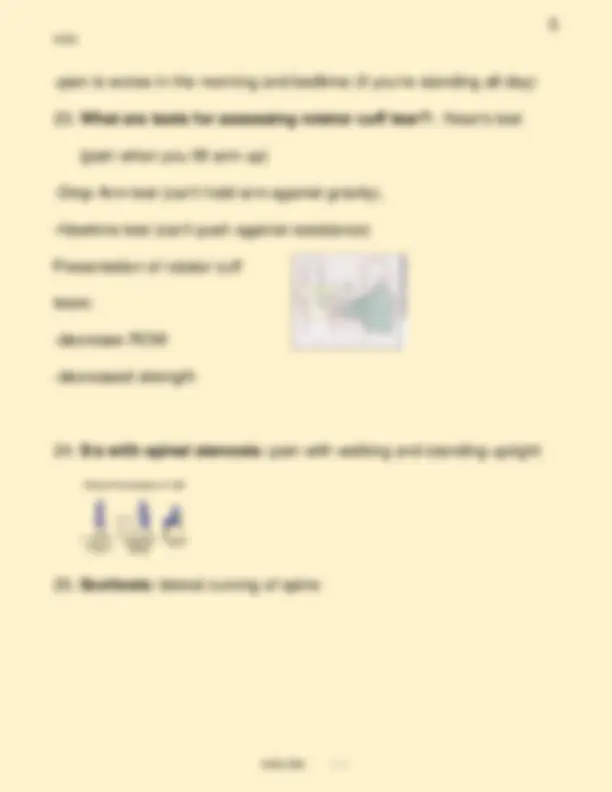
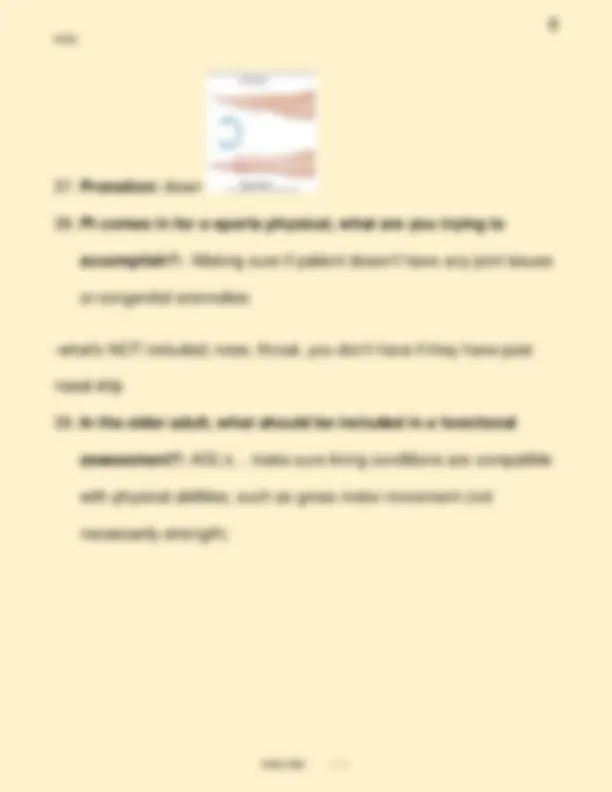
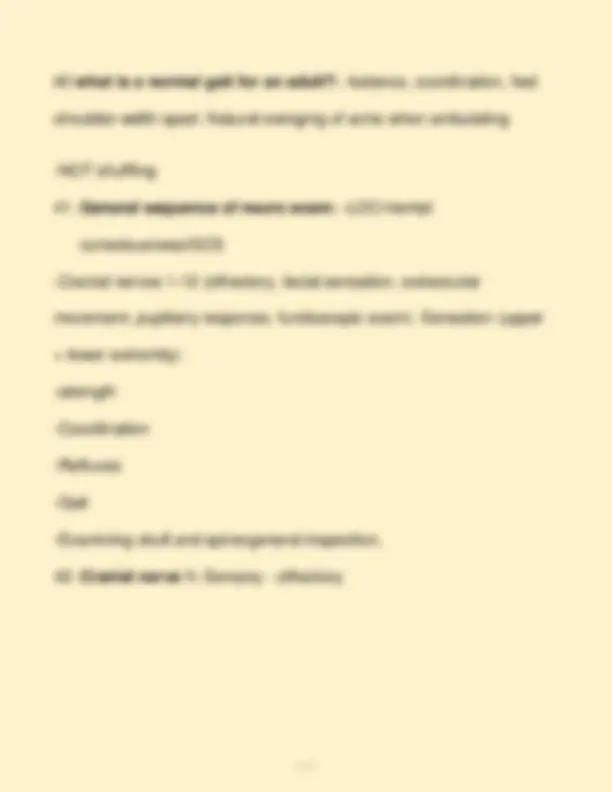
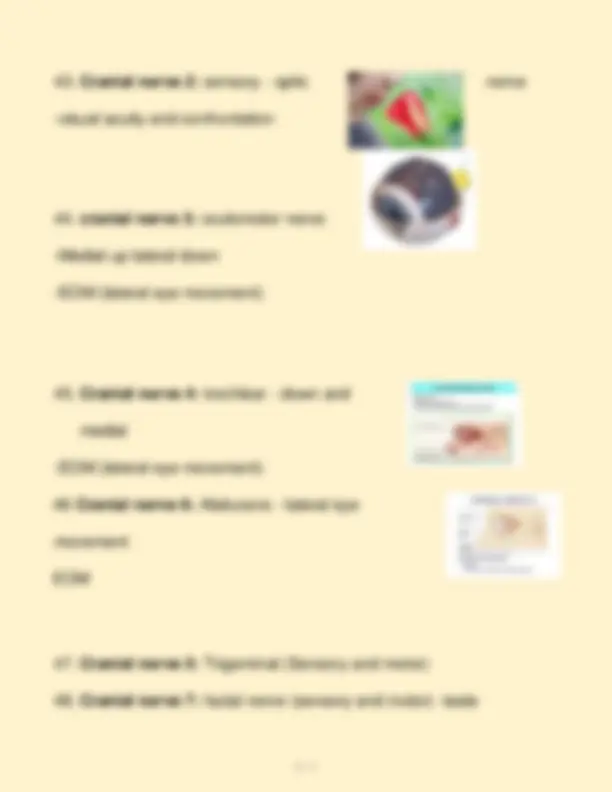
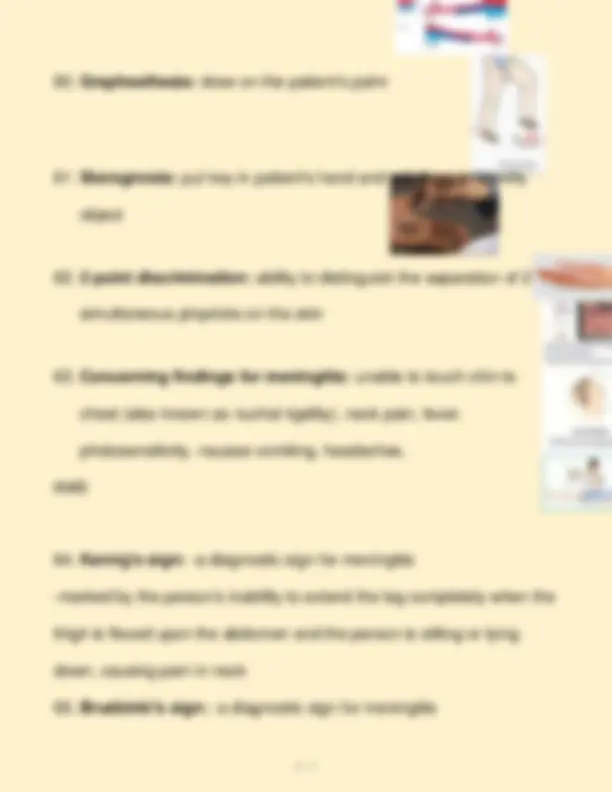

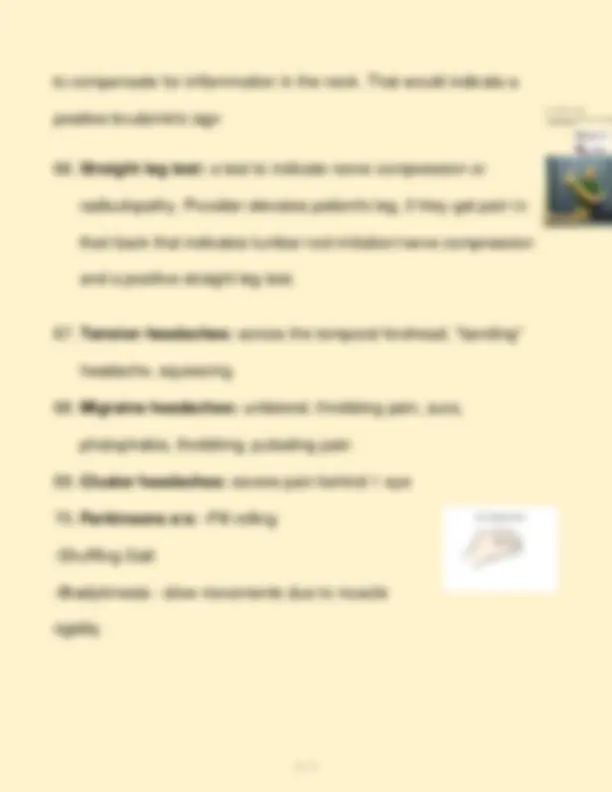


Study with the several resources on Docsity

Earn points by helping other students or get them with a premium plan


Prepare for your exams
Study with the several resources on Docsity

Earn points to download
Earn points by helping other students or get them with a premium plan
Community
Ask the community for help and clear up your study doubts
Discover the best universities in your country according to Docsity users
Free resources
Download our free guides on studying techniques, anxiety management strategies, and thesis advice from Docsity tutors
1. What is the best way to assess for joint symmetry?: inspection by comparing joint from one side to the other 2. What is the correct position when performing a rectal/prostate exam?: side-lying position 3. When doing your prostate exam, what area are you palpating?: Posterior aspect 4. What should a normal prostate feel like?: Rubbery and smooth 5. How do you know that someone has rectal prolapse?: When the patient is experiencing sliding of the rectum, occurs during straining 6. What do external hemorrhoids look like?: small masses that are pink/red and beefy.
Typology: Exams
1 / 17

This page cannot be seen from the preview
Don't miss anything!










NSG NSG 500 1 /^17
NSG NSG 500 2 /^17 ....If it's purple/really dark in color; that is a concern for a thrombus hemmroid and a bad finding!!
NSG NSG 500 4 /^17
NSG NSG 500 5 /^17
NSG NSG 500 7 /^17
NSG NSG 500 8 /^17
10 / 17
11 / 17
13 / 17
14 / 17
16 / 17
17 / 17